When visiting a large number of farmers and contractors around the Waikato region, the hub of dairy production in New Zealand, a common occurrence I encountered was that a huge amount of forage is traded based on a c/kg DM basis.
To make this possible, all contractors run a weighbridge alongside each of their forage harvesting fleets.
We caught up with Brook Nettleton from Blue Grass Contracting who showed us how a typical large contracting operation in the region works.
The day we visited Brook, they were drawing grass silage 30km each way (60km round trip) using 11 rigid lorries. The grass was coming off a Fonterra-owned block of land and was being sold to a dairy farmer. Just up the road from where the forager was working, a weighbridge was set up on the roadside. Here, a scales operator was responsible for weighing in every rigid load of grass before logging the details and printing out a receipt for each load for full transparency.
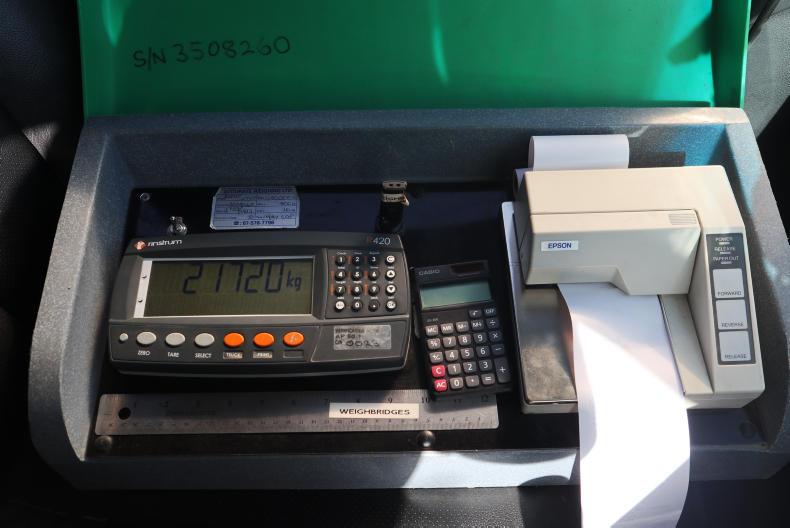
The weight of each load is logged and a receipt is printed out for full transparency.
At the weighbridge, the farmer determines how many samples of the crop they would like to be taken. It typically varies from one per round of trucks to one per paddock.
These samples are sealed and sent off to an independent laboratory where their DM and constituents are tested. Each sample costs $32 for the DM to be tested or $75-$80 for a full test analysis.
At peak season, the laboratory that tests most of the forage in the Waikato region takes in 2,000 to 3,000 samples per day. It usually takes three to five days for results to be sent back.
These results are put into a spreadsheet and the price is then generally derived from the tested quality of the constituents. Brook said more and more farmers are now trying to buy feed based on its energy (ME) rating.
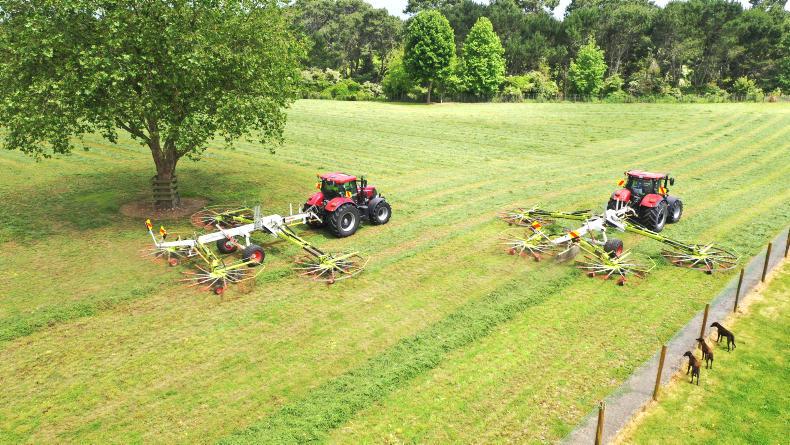
At the minute, Lucerne is trading in the region of 21c/kg DM with an ME rating of 12, while maize is looking like it will be around 22-25c/kg DM.
The weighbridge also informs the driver the exact gross weight of the truck. The authorities in New Zealand are very strict on truck weights, so much so that they have built weighbridges in to the sides of the roads where trucks are pulled up and inspected quite regularly. To ensure weighbridges are accurate, they are independently tested and certified each year.
Sourcing and pricing
Like many other contractors in New Zealand, Brook is responsible for buying and selling a huge amount of forage each year. A lot of the forage he handles is purchased off large stations and traded to predominately dairy farms on a c/kg DM basis.
Brook said: “We haul a lot of forage large distances. On one job we haul maize to a farm near Lake Taupo which is over 120km away.
“The standing price of crops varies year to year, but at the minute Lucerne is trading in the region of 21c/kg DM with an ME rating of 12, while maize is looking like it will be around 22-25c/kg DM.

At the minute, Lucerne is trading in the region of 21c/kg DM with an ME rating of 12, while maize is looking like it will be around 22-25c/kg DM.
“As a contractor we would prefer to weigh in all feed and charge the contracting fee by its weight as grass yields can vary from 2-6t/ha while maize crops here can vary from 20-25t/ha.
“We think it’s the fairest way. Last year we would have weighed in over 19,000t of maize which would account for 60% of the maize workload.”
Contractor charges
Once a price for a crop is agreed, the contractor then charges a c/kg DM price on top of charges by the hectare or charges by the hour – it tends to be job specific.
Brook said: “Around our base, crops of grass normally yield 2.5-3t/ha when it comes to harvesting.
“For a typical on-farm full job (no road haulage over 2km) with a crop like this we charge 10 to 12c/kg DM, which would be the equivalent of $320 to $360 per hectare.
“However, if more trucks need to be added for a longer haul, our charge could go up to 20c/kg DM. It’s very job specific. Meanwhile, for an on-farm maize job, we charge in the region of $1,000 to $1,300/ha.
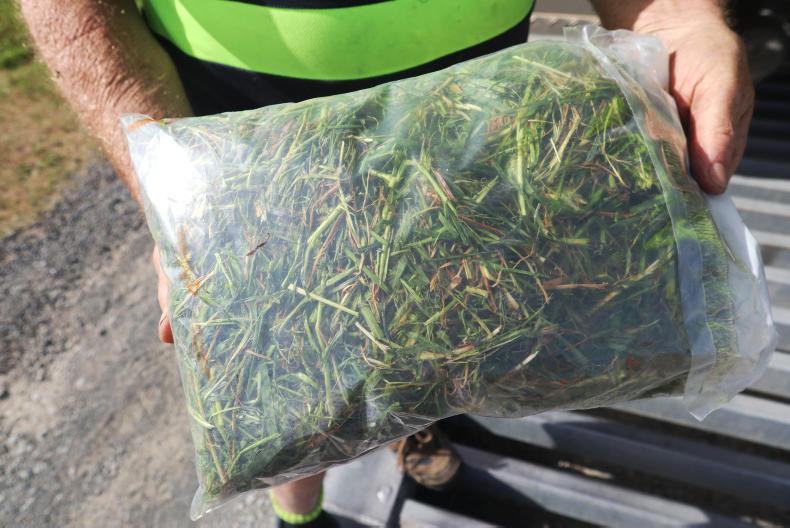
The farmer determines how many samples of the crop they would like to be taken. It typically varies from one per round of trucks to one per paddock.
“Our typical silage job near our base would vary from 15ha to 70ha. When we’re finished chopping around home we head down to Lake Taupo which is around 150km south of our base.
“Here, the season is a little later and the grass is just ready to be cut around now.
“We typically work in this region for a further six weeks, before returning home to begin the maize season.
“As it’s so far away, we tend to spend six days working down there and come home for the Sunday.
“The farms in this region are relatively larger and the jobs vary in size from 100ha up to 500ha. Meanwhile, our maize jobs vary from 8ha up to 100ha.
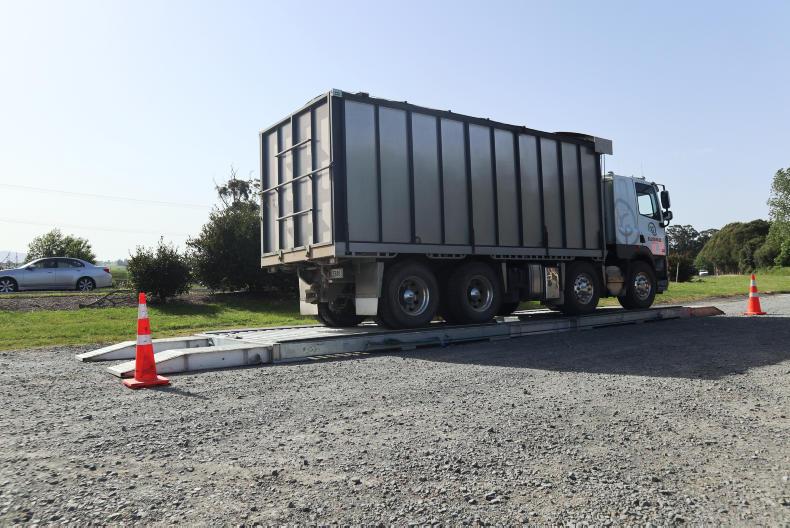
Every load of forage is weighed in before the details are logged and a receipt is printed out for full transparency.
“Each year we cut between 6,000 and 8,000ha of grass silage and a further 1,600 to 1,800ha of maize. About 700ha of this maize is harvested and put into a pit on farm while the rest is traded.
“We run a team of three 900 series Claas foragers and JCB wheel loaders to get through this workload which is typically spread across a seven-month period.”
Billing and payment
Something that really impressed me with everyone involved in the agricultural industry in New Zealand is that all bills are paid on the 20th day of the following month.
This includes the likes of the diesel supplier, the contractor and the agri supplies store for example.
So for instance, if a job of any description is done by Brook and his team today, the job cards are handed in to the office and the bills are tallied and sent out, mostly by email.
Payment is then due for the 20th of the following month. Brook, like many other contractors, said that over 95% of payments are now made through bank transfer.
He also said that the vast majority of his clients are very good at meeting their deadlines.
Brook first got into silage and cultivation works in 2004, and later employed his first Irish staff in 2008. Today, he employs a total of 42 staff, 16 of whom are Irish.
Brook said: “I have great time for the Irish boys. They work hard and they play hard.
“They always show up on time every morning. I employed the first Irish lads back in 2008, some of whom are still working with me.”
Trailers
Back in 2012, Brook was in the market for a number of silage trailers.
Although he carts the majority of the forage with the rigid trucks, he tends to use tractors and trailers in the early spring when conditions are more difficult and then for the on-farm silage and maize jobs with a short draw.
Irish contact
After speaking to some of his Irish staff, Brook decided to get in contact with William Herron of Herron trailers in Co Down.
He later bought two trailers, both of which Brook noted were delivered to his yard at the time for $45,000, which was the same price as one New Zealand built trailer of a comparable spec.
These were the first Herron trailers in New Zealand before Webline, a machinery importer, took on the agency. Brook said they have been a really good trailer and as a result went on to buy two more new Herrons in 2016.
Tractor and trailer
v trucks
On the tractor and trailer v trucks debate, Brook said: “The reason we run predominantly trucks is because they’re so much more cost-effective to run.
“They have roughly half the maintenance costs of a tractor and trailer, and can cart forage much further. Tractors and trailers are an expensive way of hauling silage.
“A new tractor and trailer out here will set you back $300,000 to $350,000. Compare this to a six-wheel truck which costs $200,000 and can travel twice as fast, it just makes more economical since to run trucks over here when the ground conditions permit.”
When visiting a large number of farmers and contractors around the Waikato region, the hub of dairy production in New Zealand, a common occurrence I encountered was that a huge amount of forage is traded based on a c/kg DM basis.
To make this possible, all contractors run a weighbridge alongside each of their forage harvesting fleets.
We caught up with Brook Nettleton from Blue Grass Contracting who showed us how a typical large contracting operation in the region works.
The day we visited Brook, they were drawing grass silage 30km each way (60km round trip) using 11 rigid lorries. The grass was coming off a Fonterra-owned block of land and was being sold to a dairy farmer. Just up the road from where the forager was working, a weighbridge was set up on the roadside. Here, a scales operator was responsible for weighing in every rigid load of grass before logging the details and printing out a receipt for each load for full transparency.

The weight of each load is logged and a receipt is printed out for full transparency.
At the weighbridge, the farmer determines how many samples of the crop they would like to be taken. It typically varies from one per round of trucks to one per paddock.
These samples are sealed and sent off to an independent laboratory where their DM and constituents are tested. Each sample costs $32 for the DM to be tested or $75-$80 for a full test analysis.
At peak season, the laboratory that tests most of the forage in the Waikato region takes in 2,000 to 3,000 samples per day. It usually takes three to five days for results to be sent back.
These results are put into a spreadsheet and the price is then generally derived from the tested quality of the constituents. Brook said more and more farmers are now trying to buy feed based on its energy (ME) rating.

At the minute, Lucerne is trading in the region of 21c/kg DM with an ME rating of 12, while maize is looking like it will be around 22-25c/kg DM.
The weighbridge also informs the driver the exact gross weight of the truck. The authorities in New Zealand are very strict on truck weights, so much so that they have built weighbridges in to the sides of the roads where trucks are pulled up and inspected quite regularly. To ensure weighbridges are accurate, they are independently tested and certified each year.
Sourcing and pricing
Like many other contractors in New Zealand, Brook is responsible for buying and selling a huge amount of forage each year. A lot of the forage he handles is purchased off large stations and traded to predominately dairy farms on a c/kg DM basis.
Brook said: “We haul a lot of forage large distances. On one job we haul maize to a farm near Lake Taupo which is over 120km away.
“The standing price of crops varies year to year, but at the minute Lucerne is trading in the region of 21c/kg DM with an ME rating of 12, while maize is looking like it will be around 22-25c/kg DM.

At the minute, Lucerne is trading in the region of 21c/kg DM with an ME rating of 12, while maize is looking like it will be around 22-25c/kg DM.
“As a contractor we would prefer to weigh in all feed and charge the contracting fee by its weight as grass yields can vary from 2-6t/ha while maize crops here can vary from 20-25t/ha.
“We think it’s the fairest way. Last year we would have weighed in over 19,000t of maize which would account for 60% of the maize workload.”
Contractor charges
Once a price for a crop is agreed, the contractor then charges a c/kg DM price on top of charges by the hectare or charges by the hour – it tends to be job specific.
Brook said: “Around our base, crops of grass normally yield 2.5-3t/ha when it comes to harvesting.
“For a typical on-farm full job (no road haulage over 2km) with a crop like this we charge 10 to 12c/kg DM, which would be the equivalent of $320 to $360 per hectare.
“However, if more trucks need to be added for a longer haul, our charge could go up to 20c/kg DM. It’s very job specific. Meanwhile, for an on-farm maize job, we charge in the region of $1,000 to $1,300/ha.

The farmer determines how many samples of the crop they would like to be taken. It typically varies from one per round of trucks to one per paddock.
“Our typical silage job near our base would vary from 15ha to 70ha. When we’re finished chopping around home we head down to Lake Taupo which is around 150km south of our base.
“Here, the season is a little later and the grass is just ready to be cut around now.
“We typically work in this region for a further six weeks, before returning home to begin the maize season.
“As it’s so far away, we tend to spend six days working down there and come home for the Sunday.
“The farms in this region are relatively larger and the jobs vary in size from 100ha up to 500ha. Meanwhile, our maize jobs vary from 8ha up to 100ha.

Every load of forage is weighed in before the details are logged and a receipt is printed out for full transparency.
“Each year we cut between 6,000 and 8,000ha of grass silage and a further 1,600 to 1,800ha of maize. About 700ha of this maize is harvested and put into a pit on farm while the rest is traded.
“We run a team of three 900 series Claas foragers and JCB wheel loaders to get through this workload which is typically spread across a seven-month period.”
Billing and payment
Something that really impressed me with everyone involved in the agricultural industry in New Zealand is that all bills are paid on the 20th day of the following month.
This includes the likes of the diesel supplier, the contractor and the agri supplies store for example.
So for instance, if a job of any description is done by Brook and his team today, the job cards are handed in to the office and the bills are tallied and sent out, mostly by email.
Payment is then due for the 20th of the following month. Brook, like many other contractors, said that over 95% of payments are now made through bank transfer.
He also said that the vast majority of his clients are very good at meeting their deadlines.
Brook first got into silage and cultivation works in 2004, and later employed his first Irish staff in 2008. Today, he employs a total of 42 staff, 16 of whom are Irish.
Brook said: “I have great time for the Irish boys. They work hard and they play hard.
“They always show up on time every morning. I employed the first Irish lads back in 2008, some of whom are still working with me.”
Trailers
Back in 2012, Brook was in the market for a number of silage trailers.
Although he carts the majority of the forage with the rigid trucks, he tends to use tractors and trailers in the early spring when conditions are more difficult and then for the on-farm silage and maize jobs with a short draw.
Irish contact
After speaking to some of his Irish staff, Brook decided to get in contact with William Herron of Herron trailers in Co Down.
He later bought two trailers, both of which Brook noted were delivered to his yard at the time for $45,000, which was the same price as one New Zealand built trailer of a comparable spec.
These were the first Herron trailers in New Zealand before Webline, a machinery importer, took on the agency. Brook said they have been a really good trailer and as a result went on to buy two more new Herrons in 2016.
Tractor and trailer
v trucks
On the tractor and trailer v trucks debate, Brook said: “The reason we run predominantly trucks is because they’re so much more cost-effective to run.
“They have roughly half the maintenance costs of a tractor and trailer, and can cart forage much further. Tractors and trailers are an expensive way of hauling silage.
“A new tractor and trailer out here will set you back $300,000 to $350,000. Compare this to a six-wheel truck which costs $200,000 and can travel twice as fast, it just makes more economical since to run trucks over here when the ground conditions permit.”






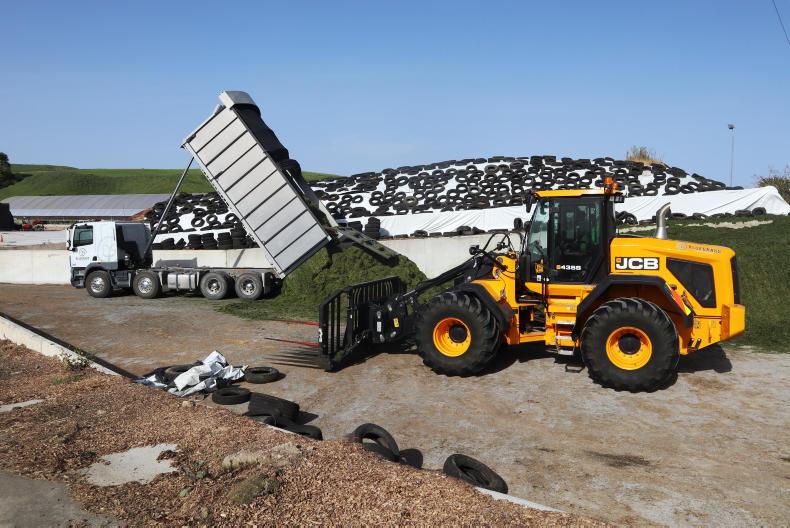




 This is a subscriber-only article
This is a subscriber-only article









SHARING OPTIONS: